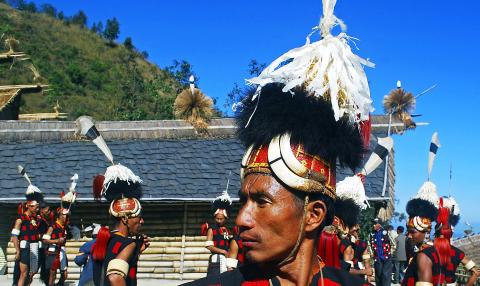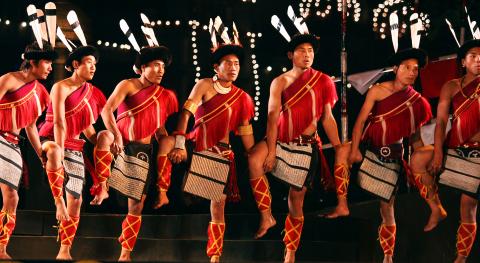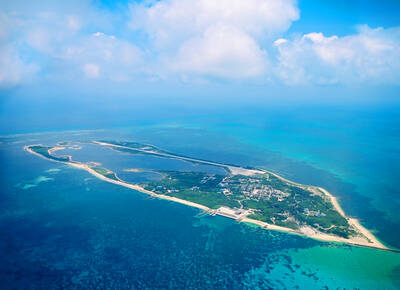Remote and largely inaccessible to foreigners, the Indian state of Nagaland is tucked into the far northeastern corner of the country. It borders the states of Assam, Manipur and Arunachal Pradesh, as well as Myanmar. Created in 1963, the state is home to some 16 Tibeto-Burmese tribes, or nearly 2 million people, many of whom, cut off from the rest of the world, have been fighting a remote and rarely reported war for independence from India, on and off, since the early 1950s.
Naga independence movements and guerilla armies, split today into warring factions, have been fighting for both freedom and a greater Nagaland that would unite all the Naga tribes — 4 million people — living across these eastern borders in a land of their own. To date, more than 200,000 Nagas have been killed, along with many Indian soldiers.
India, though, is unlikely to let Nagaland go, much less to encourage the creation of Nagalim, or Greater Nagaland. For, unexpectedly, this far off corner of the world has been a pinch point of grand political ambitions. In the 1940s, the Japanese came this way hoping to seize India; in the 1960s, the Chinese considered attacking India the same way. Nagaland and the Naga tribes remain pawns on a global chessboard. And there is oil here, the worldwide enemy of independence and peace.

Photo: AFP AND EPA
For all the cordite and crackle of guns over the decades, though, it is a compelling place — Shangri-la seen through a glass darkly — largely unknown even within India. My family has generations of strong military ties to India, and I had wanted to visit this high and haunting land since I was a child. For many years, though, Nagaland — surrounded by red tape and the guns of the Assam Rifles — remained a dream destination, much as Kafiristan had been for Brothers Daniel Dravot and Peachey Carnehan, Freemasons and soldiers of fortune, in Kipling’s The Man Who Would Be King, a short story that I had read over and again as a boy.
Eventually, I got to Nagaland, and have returned several times over the past 25 years. I have trekked its flower-bedecked hills and precipitous ravines. I have crossed the high and slippery mountain border into Myanmar, where the eastern Nagas live in a hidden world of animism: head-hunting, feathered, beaded, horned; wearing sea-shelled costumes and living in magnificent hilltop villages that have barely changed for many hundreds of years.
It was so very hard to get here and yet I was bemused to learn that TV chef Gordon Ramsay has been here for a food program. Hunting deer, I think, rather than heads. In the past, Nagas were known, if at all, as the world’s most enthusiastic headhunters. Though officially banned decades ago, few doubt that the practice continues in remote and warring areas.

Photo: AFP AND EPA
When I began to write my book on Nagaland, I went to see Michael Palin, who had been there to film part of his television series on the Himalayas.
“I had made a comedy series years before called Ripping Yarns, with Terry Jones,” Palin told me. “These were send-ups of Boy’s Own-style tales of Victorian derring-do during the days of the British Empire, with one silly chump battling up the Andes with a party of frogs, and another being struck down by some ancient curse made by the god of the tribesmen in the Naga Hills. We knew nothing really about the Naga Hills, but the name sounded wonderful, full of the mysteries of the colonial East. When I finally got there, I was quite aware that we were only being tolerated by the authorities and that the true Nagaland lay somewhere up muddy tracks in those misty hills. Even the mighty BBC couldn’t take us to where very few Indians have ever stepped foot.”
My first visit in the 1980s involved an arduous walk through Bhutan and Arunachal Pradesh, and across the northeastern border. That walk was an adventure made for its own sake through magnificent wild landscapes. It was a very inefficient means of getting to the Naga Hills. If only the Indian government had been able to tell the difference between those intent on innocent travel and those bent on trade, trafficking and trouble, and had issued visas to bona fide visitors. It didn’t, so you had to find your own way in.
Fresh from visiting the brand new and thrilling tiger reserve at Namdapha, I walked down to the Brahmaputra. Ferried by fishermen across the demanding river in one of its gentler moods, I was dropped off, now in Assam, at Dikhomukh. Here, innumerable tributaries flow into the Brahmaputra. One of these is the Dikho River, and while I was climbing up its banks I was approached by a slight, wiry and long-haired young man, my own age I guessed, dressed in sawn-off jeans, his bare chest and shoulders draped in necklaces made of beads, animal teeth, tiny fur-lined paws, small gold and silver coins and, intriguingly, a World War II Burma Star. This was Ngangshi — a nickname taken from the fine cloths his family wove — the first Naga I had met in his own country.
Ngangshi led me to a faded blue putt-putt boat tied to a tree and, with my bag and his knapsack on board, we set off into the shadowy riverine landscape. So low were we that it was only the following morning that, having scrambled up a steep bank, I caught sight of the Naga Hills for the first time. How they glistened. The pastures and paddies leading up to them were dressed and adorned in what appeared to be alpine flowers. How the birds sang, while monkeys looned and jeered. Up in that beckoning green citadel was a people whose history had barely been written.
In the morning, we walked up by an old railway track to the rickety wooden settlement of Naginimara. And from here, with new friends and by paths that might defeat a less than able goat, I got about the country. And met its people, and, slowly, wrote their story, of which this article is a fragment.
It’s still hard to get a visa to travel freely here. The present situation is that foreign and Indian tourists can apply to visit “Protected Areas” within officially defined “tour circuits” with “definite entry and exit permits.” The Government of Nagaland promises to “monitor the movement of foreign tourists.” So you can visit specific places — many very beautiful, including nature reserves and villages abounding in colorful festivals — but you won’t be able to continue up into the heights and depths of the Naga Hills where the borders disperse, often without barriers — but with fearful insects and other creeping, biting things — into surrounding states and countries, where you will encounter traditional village ways of life as well as Naga warriors dressed in battle fatigues and armed with mobile phones, Chinese guns and American bibles.
Missionaries, many from the US, have been hugely successful in turning Nagas into Baptists; the biggest buildings in the ramshackle towns are their churches. The most ardent freedom fighters, even when committed Maoists, are often devout Christians.
It is notoriously hard to get above the hail-filled clouds that wreath the Naga Hills in the long months of the monsoon, but when the clouds lift, views from these slippery crests, peaks and ridges, whether at 600m or 3,600m, are utterly sublime. For kilometer after kilometer, a densely green landscape rises from leech-infested, mosquito-haunted tropical jungle before plunging down the next ravine to deeply shadowed rivers — icy in winter — snaking through hill after hill. Ravines follow one another in what appears to be an ever-closer succession until the greenery blurs hypnotically under peerless blue skies.
Zoologists and botanists describe Nagaland as a “biodiversity hot spot.” Good enough reason to go. The wealth of plants, flowers, birds and animals here is stunning. Pangolins, porcupines, barking deer, buffalo and elephants share forests, clearings and riverbeds with monkeys, wild dogs, at least 40 different snakes, several of them poisonous. Bird life is prolific. There are bears in the higher hills, leopards and tigers, too.
All too many animals, however, end up in the pot. On my last visit to the market at Kohima, the state capital, I looked with a resigned sadness at skinned dogs, dog skins, rats and rare birds, writhing red worms and a capuchin monkey, which I hope was not the one offered to me as a pet the previous day in Kohima cemetery.
Earlier European visitors to Nagaland were equally in danger of extinction. The haunting military cemetery at Kohima records the deaths of those who fought at the Battle of Kohima in 1944, a hand-to-hand combat that saw the Japanese driven back from the borders of India.
One marker honors the uncertain remains of Private Thomas Collins, 21, from Barkingside, southeast England. The fighting at Kohima was so intense that bodies were mixed into a mash of bloody tropical ooze. It seems not only sad that a life like that of Collins should have been blasted from him at such a tender age, but also somehow almost ineffably strange that this young lad from England should have died in the Naga Hills. This was very probably his first trip abroad. One moment, his big adventure would have been to take a train up to town from Barkingside; the next moment, drilled, dressed in khaki, Lee-Enfield .303 over his shoulder, Collins was packed off to die in this improbably remote corner of the British Empire.
Would I recommend going to Nagaland knowing the restrictions imposed on visitors? I think so. It has taken me years to get to know this forgotten frontier, its peoples, history, wars, culture, myths and hopes. If you long to find an exotic “Switzerland of the East,” here it is, although don’t expect gleaming hotels, rosti and reliable transport; more importantly, you may just get to know a forgotten people who will make you see Britain, India and global ambitions through very different eyes, while the landscape, as so many who have come this way know to their cost, is truly to die for.
Further information: As well as an Indian tourist visa, visitors require a Restricted Area Permit for Nagaland. Restricted Area Permits are only issued to visitors traveling in a group of four or more, or married couples. In effect, solo travelers cannot go to Nagaland.

Late last month Philippines Foreign Affairs Secretary Theresa Lazaro told the Philippine Senate that the nation has sufficient funds to evacuate the nearly 170,000 Filipino residents in Taiwan, 84 percent of whom are migrant workers, in the event of war. Agencies have been exploring evacuation scenarios since early this year, she said. She also observed that since the Philippines has only limited ships, the government is consulting security agencies for alternatives. Filipinos are a distant third in overall migrant worker population. Indonesia has over 248,000 workers, followed by roughly 240,000 Vietnamese. It should be noted that there are another 170,000

Enter the Dragon 13 will bring Taiwan’s first taste of Dirty Boxing Sunday at Taipei Gymnasium, one highlight of a mixed-rules card blending new formats with traditional MMA. The undercard starts at 10:30am, with the main card beginning at 4pm. Tickets are NT$1,200. Dirty Boxing is a US-born ruleset popularized by fighters Mike Perry and Jon Jones as an alternative to boxing. The format has gained traction overseas, with its inaugural championship streamed free to millions on YouTube, Facebook and Instagram. Taiwan’s version allows punches and elbows with clinch striking, but bans kicks, knees and takedowns. The rules are stricter than the

“Far from being a rock or island … it turns out that the best metaphor to describe the human body is ‘sponge.’ We’re permeable,” write Rick Smith and Bruce Lourie in their book Slow Death By Rubber Duck: The Secret Danger of Everyday Things. While the permeability of our cells is key to being alive, it also means we absorb more potentially harmful substances than we realize. Studies have found a number of chemical residues in human breast milk, urine and water systems. Many of them are endocrine disruptors, which can interfere with the body’s natural hormones. “They can mimic, block

Pratas Island, or Dongsha (東沙群島) had lain off the southern coast of China for thousands of years with no one claiming it until 1908, when a Japanese merchant set up a facility there to harvest guano. The Americans, then overlords of the Philippines, disturbed to learn of Japanese expansion so close to their colony, alerted the Manchu (Qing) government. That same year the British government asked the Manchus who owned the island, which prompted the Manchu government to make a claim, according to South China Sea expert Bill Hayton. In 1909 the government of Guangdong finally got around to sending